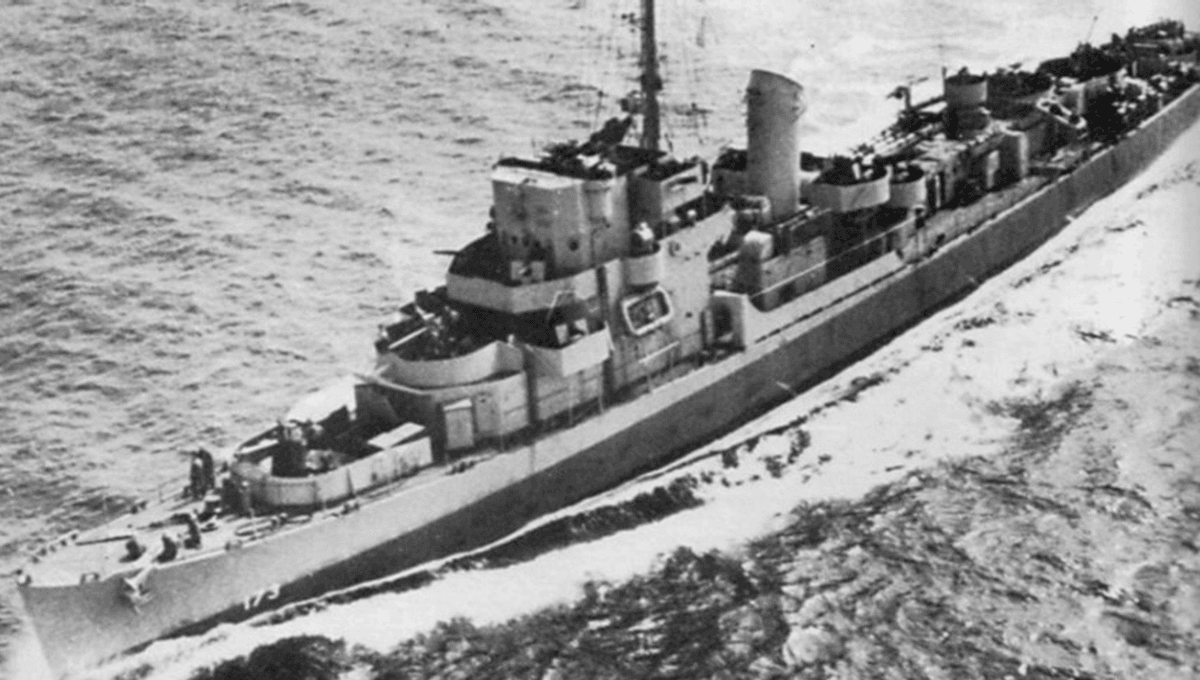
If you’ve spent too long on the Internet – and let’s face it, we all have – you may have come across the story of the Philadelphia Experiment.
According to the urban legend on 28 October 1943, Naval destroyer the USS Eldridge conducted a top secret experiment. There’s no sugar-coating just how stupid the conspiracy theory is, so here goes: according to the tale, the ship teleported from Philadelphia to Norfolk, Virginia, before teleporting back to Philadelphia.
“It is believed that this experiment was based on the Unified Field Theory,” one description of the tale reads. “The experiment allegedly aimed to manipulate the gravitational and electromagnetic fields of the ship to create a cloaking effect, making the ship invisible and about to travel through time.”
Other tales say that the ship was teleported, rather than simply made invisible and shot back through time.
Unfortunately for the imaginary crew, the technology hadn’t been perfected yet. This is no surprise, given that we are still nowhere near capable of teleportation of matter today, let alone the complex task of deconstructing and reconstructing humans. In one fun study, students at the University of Leicester tried to calculate how much data you would need to transfer if you were to teleport a human, including the data for each human cell.
“Mentally rebuilding a person is not so simple,” the University of Leicester explained in a press release. “The full information of the traveller’s brain is required, which brings the total information content up to around 2.6 x 1042 [bits].”
They then looked at how long it would take to transfer this data to a chosen point in space, for reconstruction at the other end.
“It was found that the time to complete a fully successful human teleportation from Earth to space was questionable,” they added, “In fact, assuming the bandwidth used is 29.5 to 30 GHz, the students discovered that the data transfer would require up to 4.85×1015 years.”
This means that if the Philadelphia Experiment did take place (and it didn’t), then they had a surprising amount of data storage and bandwidth for the 1940s, transferring all those humans and their ship.
According to various stories around the web, the crew supposedly suffered severe side effects after the jump, from disorientation and nausea to burns and spontaneous combustion. Some particularly unfortunate imaginary crew members were even said to have been fused to the ship’s hull. Others disappeared entirely, making that small transmission from “made up” to “made up and vanished without a trace”.
Conspiracy theorists, of course, believe that the experiment was covered up, explaining why there is no evidence of this happening. But the real explanation is much simpler: the story was made up by one man in 1955.
The story all comes from notes written on a copy of Morris K. Jessup’s book The Case for the UFO: Unidentified Flying Objects. Which isn’t what we’d call the most reliable source imaginable. Jessup was sent letters by American Merchant Marine Carl M. Allen claiming to have knowledge of the experiment, and a copy of the book was sent to the Office of Naval Research anonymously, containing notes claiming to be from three different people all with knowledge of aliens.
“The pages of the book were interspersed with hand-written comments which alleged a knowledge of UFO’s, their means of motion, the culture and ethos of the beings occupying these UFO’s, described in pseudo-scientific and incoherent terms,” the Office of Naval Research explained after receiving “innumerable” queries.
As fun as the story is, the person who handed Jessup the annotated book later admitted it was a hoax and that all details had been made up with one purpose: “To scare the hell out of Jessup.”
Or maybe the time-traveling space aliens threatened to teleport him to alpha centauri unless he kept his trap shut, whichever explanation is simplest.
Source Link: The Real Story Behind The Infamous "Philadelphia Experiment"